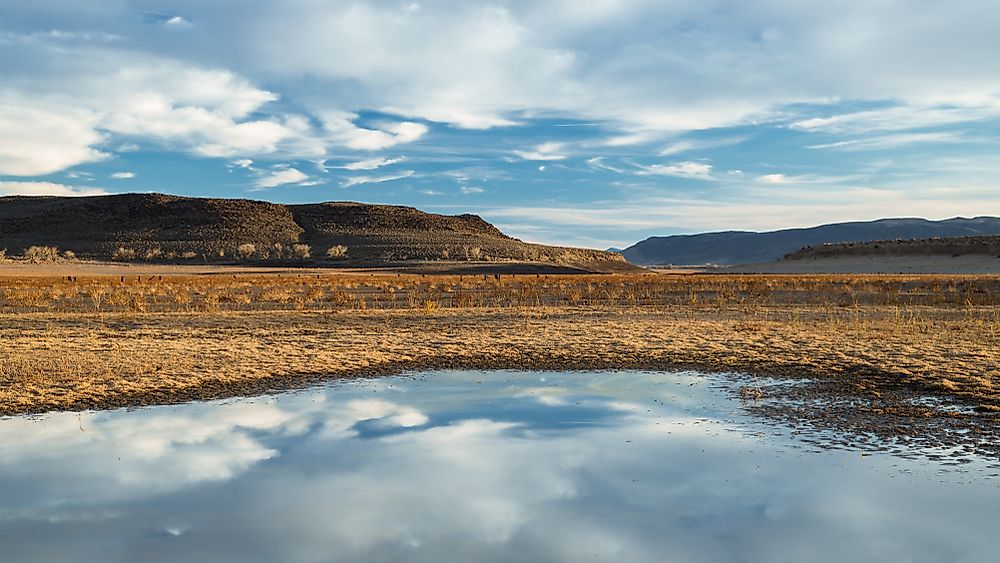What is a Pluvial Lake?

Pluvial lakes are formed by exorbitant rainfall that coincided with very low evaporation levels. The name itself is taken from the Latin language to indicate the connection with the rain and moisture. When talking about pluvial lakes in the context of climate change or geographical research, they point to a lot more information than simply whether there is a lake present or not.
Pluvial lakes are considered to have been formed in the last glacial period. Their existence today, or lack thereof, indicates a huge shift in the climate conditions of the specific areas. That means that in areas with extremely dry conditions, there was a sudden onset of massive rain pour that transformed them into lakes.
How are Pluvial Lakes Formed?
Ancient pluvial lakes have been studied extensively. This may seem surprising, considering that the majority of those lakes no longer exist, however it’s just the water body that is not there anymore. The lakes have left plenty of very prominent characteristics indicating they were created without any human interference. Not only that, but the landforms show how and when they were created. Scientists were able to study those landform attributes and learn more about how pluvials lakes form and what makes them disappear.
They found out that during the glacial period, the majority of the lakes appeared in very dry areas where the accumulated rain could not create its own natural drain system but rather it just sat on the surface of the area. However, the climate conditions changed for those areas, thus making them wet. A big influx of water resulted in the lakes spreading and creating big pluvial lakes we know today.
Shrinking Lakes
It is a bit more complicated than that, but essentially, yes. When there are periods of little rainfall and other weather conditions that bring a limited amount of moisture, it is expected that pluvial lakes will have lower water levels.
Since the lake is structured in a way that it doesn’t allow for drainage, with little precipitation incoming and the conditions being dry, the large water surface begins to evaporate into the air.
What Else Can We Learn From Pluvial Lakes?
Pluvial lakes are an immense source of data for geographical studies and experiments, especially those scientists interested in paleoclimatology which covers climate changes related to the entire Earth history. They are able to determine the exact weather patterns happening in a particular time in history, using data recovered from the lake shorelines.
The drain-less space occupied by pluvial lakes resembles a closed off basin, whose water cycles indicate dry and wet periods very precisely; more precipitation and cooler air means that the basin will fill up and flood the surrounding area, leaving indications of shorelines on higher ground. Hotter climate conditions and less rain make the lake water recede, leaving behind lower shorelines.
The findings are important as they allow for predictions on how a certain geographical area may change in the future, and how weather patterns can affect them during those changes. Pluvial lakes, those in existence as well as those that disappeared a long time ago, stand as a testament to how nature can suddenly completely modify an area.











